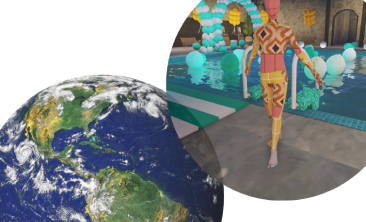
What’s All The Fuss With The Metaverse?
What’s All The Fuss With The Metaverse? https://www.visualstorytell.com/wp-content/uploads/2021/12/Whats-all-the-fuss-with-the-metaverse_thumb.jpg 366 222 Shlomi Ron Shlomi Ron https://secure.gravatar.com/avatar/995c0cf093380b90c7704fda398c9addf4e5c605afbc92af5c3f01f67d65aa41?s=96&d=mm&r=g
2021 proved to be quite busy on all fronts including significant tech innovation.
Only last April, I published a story titled What’s All The Fuss With NFT? Now I feel it’s time to deconstruct another fuss – drumroll….the metaverse! To be fair, you may also want to check a 2019’s podcast episode I did unpacking How To Tell Stories using Crypto Art?
But back to the Metaverse, how did it all start and why now?
First off, Metaverse means “beyond the universe.”
The roots for the growing popularity of the metaverse narrative are stemming from:
– Strong origin story: back in 1992, Neil Stephenson, first came up with the term in his cyberpunk novel Snow Crush. which I had to the chance to read at the time and quite enjoyed. Stephenson describes a future world where people move in and out from offline to online experiences with screenless ease.
– Endorsement by heavyweight influencer in need of attention diversion the embattled Facebook rebranding to Meta at Facebook Connect on October 28, 2021. As you can see, the announcement spiked interest after 5 years of flat activity.
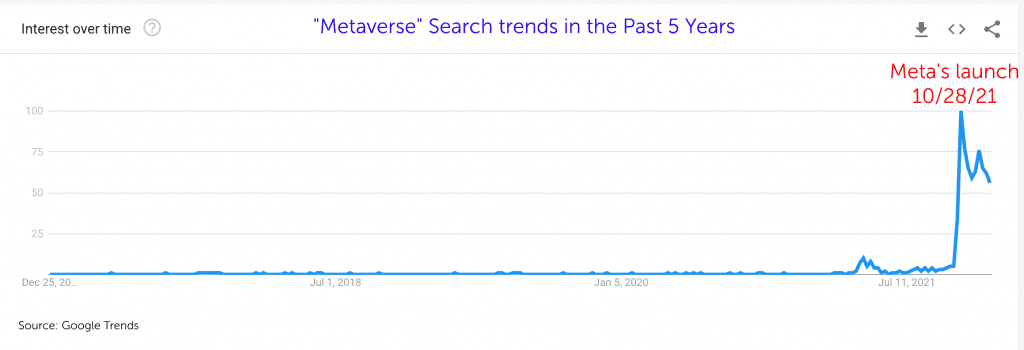
– AR/VR industry looking for brand refresh with less than 30% US adoption rate (AR 28.1 % and VR 17.7%) in 2021 (Business Insider).
– 20 months of pandemic fatigue fueled by a desperate need for escapism.
– Rising hype over blockchain and NFT as backbone economy for the new vision.
– Existing framework to ride on: Web1 (90’s initial connectivity), web2 (emergence of social and mobile) and you guessed it next comes web3 (block-chained metaverse!) 🙂
OK, but what is this Metaverse?
In case you wondered, there is no new global internet you’re missing out on.
Well, not just yet 🙂
According to Wikipedia:
“A metaverse is a network of 3D virtual worlds focused on social connection. In futurism and science fiction, the term is often described as a hypothetical iteration of the Internet as a single, universal virtual world that is facilitated by the use of virtual and augmented reality headsets”
If you google the term you’ll find various definitions that very much resemble that timeless parable, Blind men and an Elephant – for the rich diversity of opinions.
But wait! Is the metaverse another version of Second Life?
If Web1 – in the mid-90’s – was all about celebrating the basic information connectivity, and Web2 – in the mid 2000’s – was all about adding broadband, social and mobile, then the vision for Web3 is quite ambitious.
And in case you’re thinking, “isn’t it like the short-lived hype around Second Life 15 years ago?” True, but there are quite different factors this time.
In fact, even Second Life’s founders admit on one hand the appeal of creating life-like experiences but the challenges of identity, rule-making, and tech usability.
Let’s zoom in!
 Gucci built a garden environment on Roblox including a store for limited edition avatar items
Gucci built a garden environment on Roblox including a store for limited edition avatar items
The purest narrative of the next iteration of the Internet is a single mixed reality world that will carry these qualities:
Experience fluidity: like in Stephenson’s novel – people will seamlessly combine offline and online experiences using smart entry devices like glasses or other minimal design viewers. Forget screens, start thinking the real world around you will carry virtual overlays.
Single identity: the common term you’ll find is interoperability or the ability to have a single identity (avatar included), to move around any network – instead of keeping track of millions of passwords.
Decentralized: Unlike Meta’s vision for the metaverse as a closed walled garden, the purest vision is that no one will own the metaverse.
Blockchained: This is where the latest growth in NFTs converge with the vision for the metaverse economy. Consumers and brands will be able to create, share and monetize virtual assets with ownership certificates.
Sounds cool, but when will all this happen?
The whole concept of the metaverse is still theoretical. We’re still at least 10-15 years away from the above Web3 model. Advancements in hardware, software and governance will first need to happen to make this vision a reality.
Gotcha! So, what do we have today?
From user-facing perspective, we currently have what I call “proof of concept islands” that cover some of the above criteria:
Gaming platforms: The closest to the metaverse vision include Roblox, Epic Games (home of Fortnite), or Sandbox. These platforms leverage their pre-existing, early adopter and loyal user base to attract brands and music concerts.
Brands should pay close attention to this category. In recent years, even before the pandemic, Gen Zs have been playing more virtual sport videogames than physical ones. As a result, there are currently more than 2.4 billion Gen Z gamers — about one-third of the world’s population, according to Statista.
Standalone virtual worlds: These are “walled gardens” initiatives to bring to life the metaverse narrative. Here you’ll find: Decentralized, Upland, or SuperWorld.
AR/VR: Despite its less than 30% US adoption, brands have been experimenting with AR and VR programs to bring brand experiences to a new level. Key players on the VR side include Vive or Oculus, and AR – range from AR glasses to dedicated smartphone apps. We also see new technologies that allow people to experience the metaverse without a headset like PORTL’s hologram tech or Disney’s patented Virtual World Simulator.
Big tech: All the usual suspects have their own metaverse plans. Kicking off this march is Facebook’s recent Meta rebranding and strategy shift, including the launch of HorizonWolds – a VR metaverse. Apple has its ARKit developer platform for developing a future AR ecosystem along with the logistics and the most loyal audience. Microsoft has just acquired Activision for $68.7 billion and is betting on the corporate metaverse centered around Teams and possibly leveraging Minecraft – its gaming platform. Google is looking to transform its search into a more immersive experience. And you can be sure Amazon will also be in to revamp its shopping experience and leverage its ownership of Twitch – the largest gaming network in the world.
NFT marketplaces: Dedicated platforms for buying and selling virtual assets like OpenSea, UNXD (luxury focused), NiftyGateways or SuperRare.
For a deeper view, check out Jan Radoff’s Metaverse Market Map.
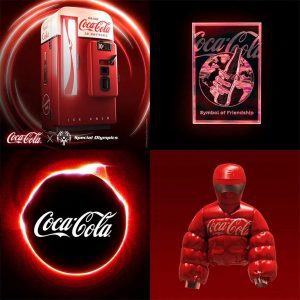 Coca Cola launched its first NFT collection on OpenSea
Coca Cola launched its first NFT collection on OpenSea
What brand stories have we seen so far?
Fashion & beauty: Lots of action with fashion brands that are auctioning their exclusive NFT collections and collecting hefty returns like D&G’s $5.6m, Ralph Lauren just announced shoppable Roblox experience and Bulgari’s launched an immersive NFT experience in Milan.
Sportswear: Nike launched NIKELAND on Roblox and Adidas AG is teaming up with the NFT brands the Bored Ape Yacht Club, and the comic series Punks Comic.
CPG: Notable deals include Coca Cola that launched its first NFT on OpenSea; and AB InBev’s Stella Artois, that in the past has sponsored offline premium horse racing tracks, last June auctioned branded horses on Zed Run (the blockchain-based online horse racing platform).
Virtual real estate: Mirroring the real world where commercial real estate buy properties for developing shopping malls, offices, or other business spaces – just last month Republic Realm bought virtual land in The Sandbox metaverse for a record $4.3 million. Crypto investor Tokens.com bought land on Decentraland for $2.4 million. Back in May last year, Krista Kim sold Mars House – the first 3D digital NFT home for $512,000 on Superrare.
Music: Stars like Travis Scott and Ariana Grande attracted over 27 million unique players and 78 million viewers on Fortnite or Roblox’s partnership with Sony Music, featuring Lil Nas X’s hit virtual performance in November 2020. All these initiatives allow music companies to reach captive audiences for their artists and generate revenue through tickets, virtual goods, loyalty tokens and much more.
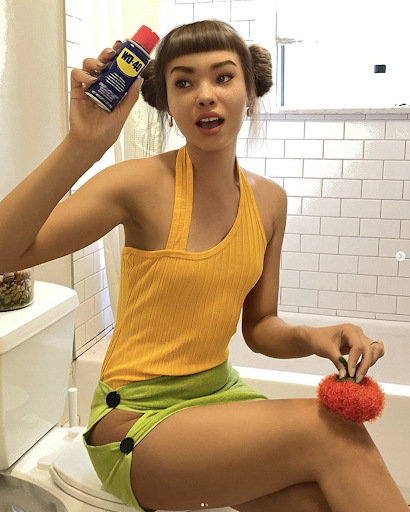 Image credit: Lil Miquela
Image credit: Lil Miquela
Cross-sector: Here you’ll find an army of virtual influencers (see in-depth analysis by Dr. Joachim Scholz) that are computer-generated brand evangelists that get this; outperform their physical counterparts! Consider Lil Miquela, “an influencer with over 3.1 Million followers on Instagram that has partnered Prada, Balenciaga, Nike, Calvin Klein, Samsung and Mini and is estimated to earn over $12 Million per year through her brand endorsements, back in 2018!”
There are a ton of other brand partnerships out there, I just wanted to give you a high level flavor of the lay of the land and some of the latest brand action in the space.
Lots of action but what’s next?
First off, word of caution, you’ll continue to come across lots of new “metavrese brand partnership deals” in the media. The term relates still to action that takes place on the above “proof of concept islands.”
With such growing interest, Crunchbase reports that metaverse companies (gaming, online games, virtual worlds, and augmented reality) have raised nearly $10.4 billion across 612 deals in 2021, with gaming leading the pack.
And if you look at the NFT Market alone, it surpassed $40 Billion in 2021 (Bloomberg).
Looking ahead, metaverse opportunity size ranges from Bloomberg’s estimating the metaverse may be an $800 billion market by 2024 to Morgan Stanley predicting the metaverse could offer a $8-trillion investment opportunity.
What brands can do?
Brands will gradually adapt their visual storytelling strategies to the metaverse in terms of transforming relevant real-life experiences into virtual and mixed reality, learning a new visual language, implementing crypto commerce, co-creation, driving social impact and above all keeping narrative originality.
Current projects, as you’ve seen range from simple NFT executions, custom mixed reality experiences, virtual goods, branded games, branded pavilions to full-fledged branded worlds.
Enjoying our content? Become a VSI Supporter
The takeaway
Like any other hot trend, brands will need to tread carefully, and avoid being blinded by “the shiny object effect” with off-character projects.
To do it right, the old rules still apply; you want to make sure your program adds clear value to your audience and is directly aligned with your brand purpose and goals.
In my recent podcast episode, I talked with Dirk Lueth, Upland’s co-founder about How Brands Can Create A Meaningful Metaverse Strategy? I liked how he sums it up:
“I always tell brands, you have to think about three things when you want to enter the metaverse:
1) Gamification: can you gamify your brand? 2) Geolocation: who else is there? Who is your neighbor? Another brand? Celebrity?
And 3) Context: Is there a special event happening you can leverage?”
Lastly, judging the metaverse future using what we know today – is always lacking. We don’t know what we don’t know.
It’s still early days and coming up with new ways to tell your brand stories in a world where the real and virtual are tightly blended – is still wide open for everybody to innovate in.
But I believe that if we ever learned anything from web2’s pitfalls, we just need to stick to evermore human-centric innovation.
Need help bringing to life your brand in the metaverse?
Book your availability on my calendar.
- Post Tags:
- blockchain
- metaverse
- metaverse strategy
- nft
Shlomi Ron
Shlomi Ron is the founder and CEO of the Visual Storytelling Institute, a Miami-based think tank with a mission to bring the gospel of visual storytelling from the world of art to more human-centric and purpose-driven marketing. A digital marketing veteran with over 20 years of experience working both on the agency and brand sides for Fortune 100/500 brands such as Nokia, IBM, and American Express. He started VSI to combine his marketing expertise with his passion for visual stories stemming from his interests in classic Italian cinema and managing the estate of video art pioneer, Buky Schwartz. At VSI, he helps brands rise above the communication noise through visual storytelling consulting, training, and thought leadership. Select clients include Estée Lauder, Microsoft, and Cable & Wireless – to name a few. He currently teaches Brand Storytelling at the University of Miami’s Business School. Thought leader and speaker at key marketing conferences. He is also the host of the Visual Storytelling Today podcast, which ranks in the top 10 best business storytelling podcasts on the Web. His book: Total Acuity: Tales with Marketing Morals to Help You Create Richer Visual Brand Stories. Outside work, he is a nascent bread baker, The Moth fan, and longtime fedora wearer likely to jive with his classic Italian cinema interest.
All stories by: Shlomi RonYou might also like
5 comments
This site uses Akismet to reduce spam. Learn how your comment data is processed.


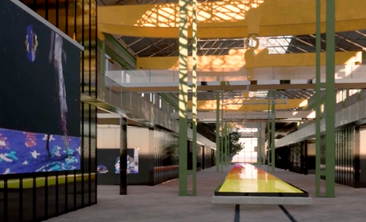


Leave a Reply